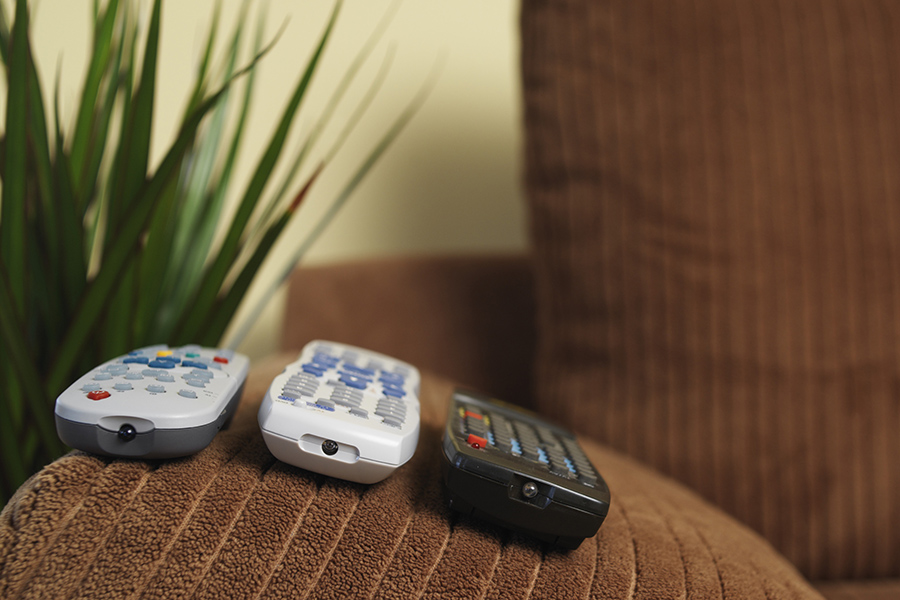Managing your remotes

Tell the truth: how many of those buttons on the TV remote control do you actually use? And what are all those other remotes piled on the coffee table for, anyway?
To make sense of it all, start by weeding out remotes that you never use (like that one for the VCR that died years ago). Labeling the ones you keep may help limit confusion. Then spend a half-hour or so consulting the instruction manuals for the remotes you use most often—some of those mysterious buttons may control features you would actually find valuable.
Choosing a universal remote
You can reduce clutter by substituting a single universal remote for that pile of individual remotes. Universal remotes generally fall into two categories—multibrand and learning. While price may be a consideration, deciding whether to use a universal remote also depends on your personal comfort level with the complexity of programming involved to set it up initially.
depends on your personal comfort level with the complexity of programming involved to set it up initially.
Multibrand remotes, typically less expensive and with fewer features, come preprogrammed with codes to operate many recently manufactured electronic components. The user looks up each device (DVD player, television, etc.) by brand and model in the information packaged with the remote, then follows the instructions to input the code for each device into the new remote.
Learning universal remotes often cost more, have more advanced features, and have the ability to “learn” the functions of the original remote that came with a particular device. They can operate a wider variety of electronic devices than the simpler multibrand remotes. Learning remotes are often designed to duplicate the commands of the original remote after the two are placed head to head to exchange information via infrared signal.
Other, more complex universal remotes are also available. Programmable remotes allow a user to create macros (sets of instructions) that initiate a sequence of functions to be performed by pushing only one button, such as turning on both the TV and the DVD player at once.
Turn your smartphone or tablet into a remote
Did you know there are apps for smartphones and tablets that allow them to be used as remotes? You can search for and download apps that control smart TVs, VCRs, even satellite systems. Other options include buying a dongle (a small add-on piece of computer hardware) that pops into the headphone jack on your phone or tablet. The dongle functions as a universal remote by either using infrared signals or accessing your home’s Wi-Fi network.
Before you choose, think about how technologically savvy you are (or how willing to learn new tricks), the effect on your battery’s charge, and whether you would prefer a touch screen or a tactile button you can really push.

